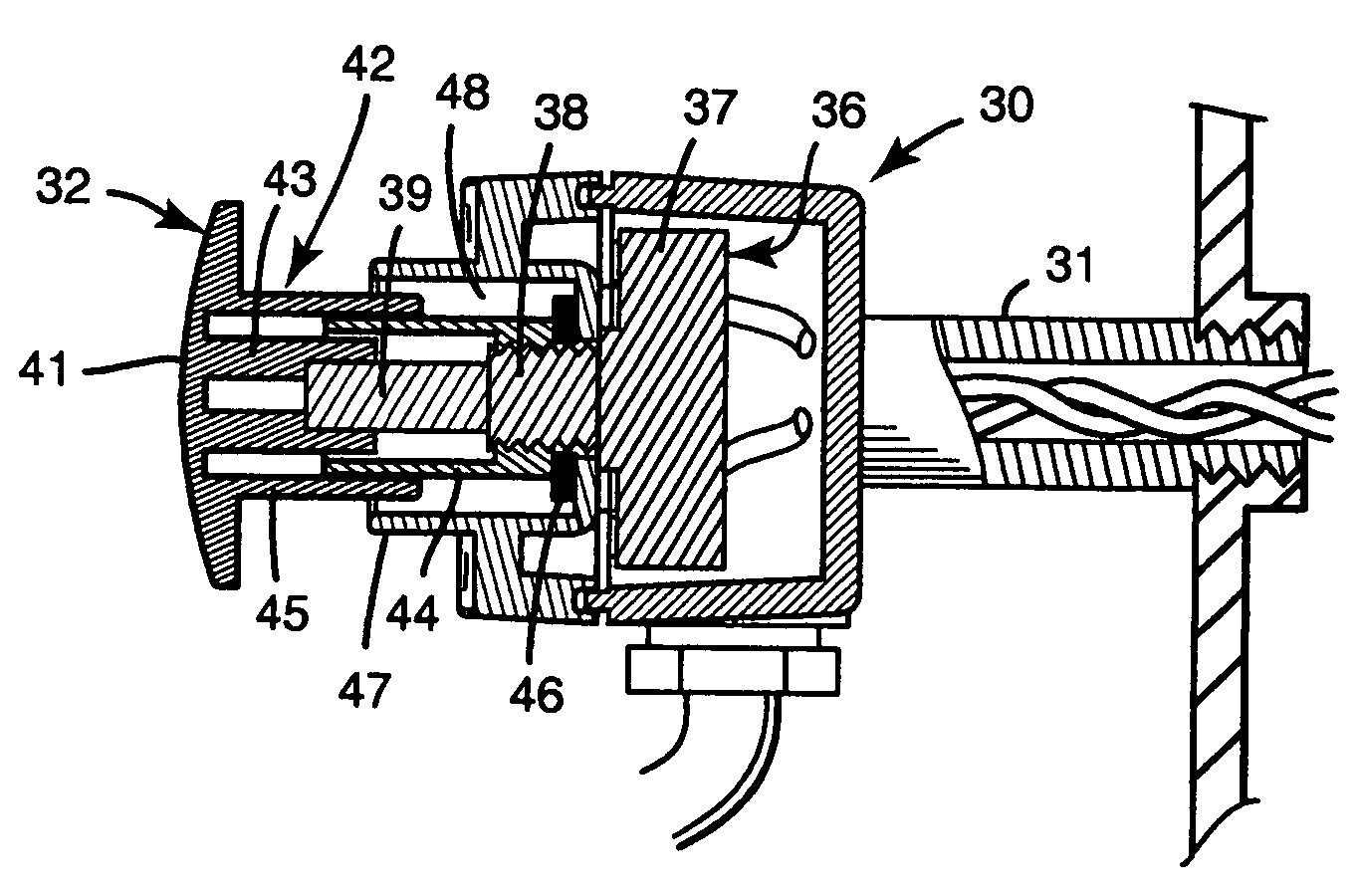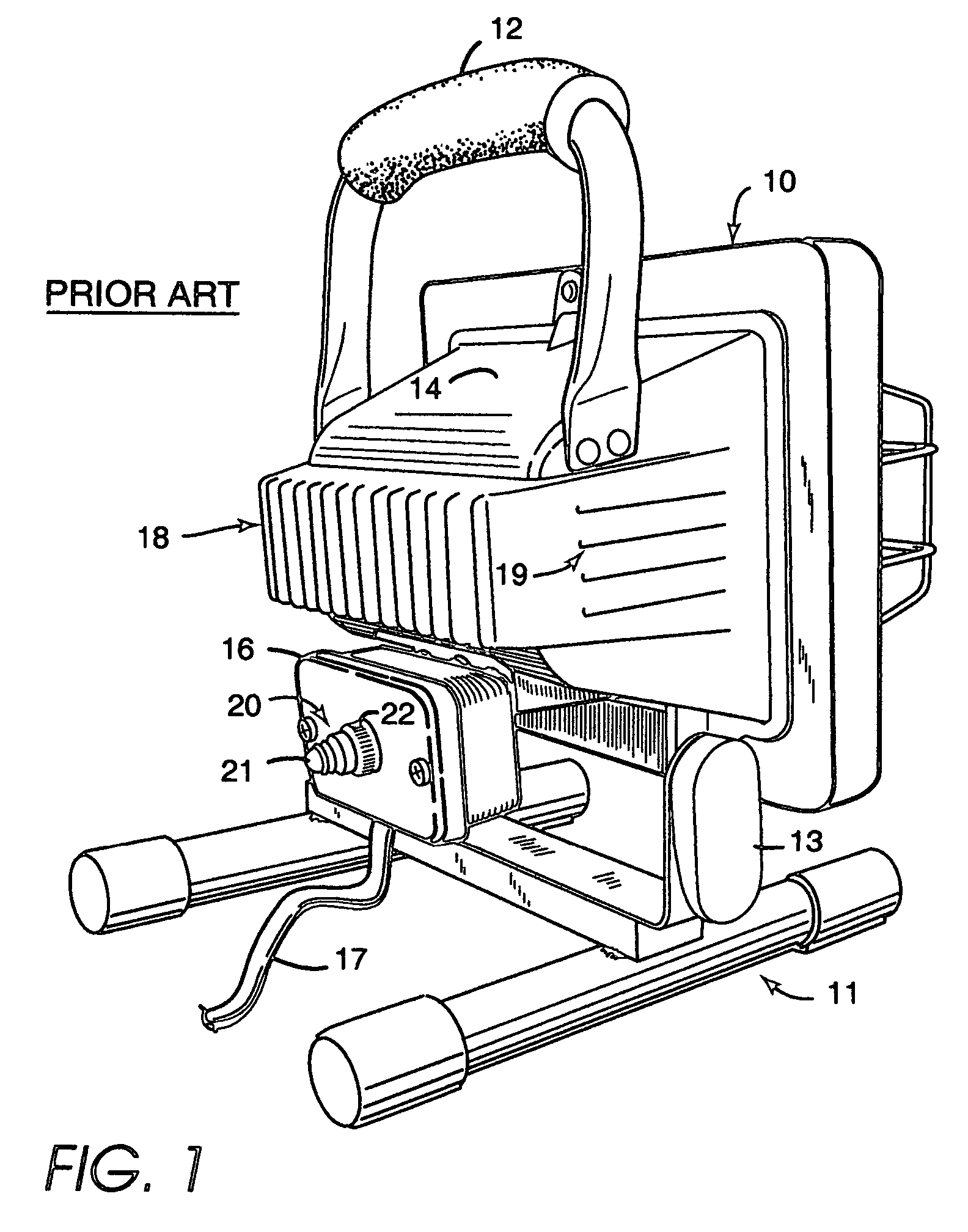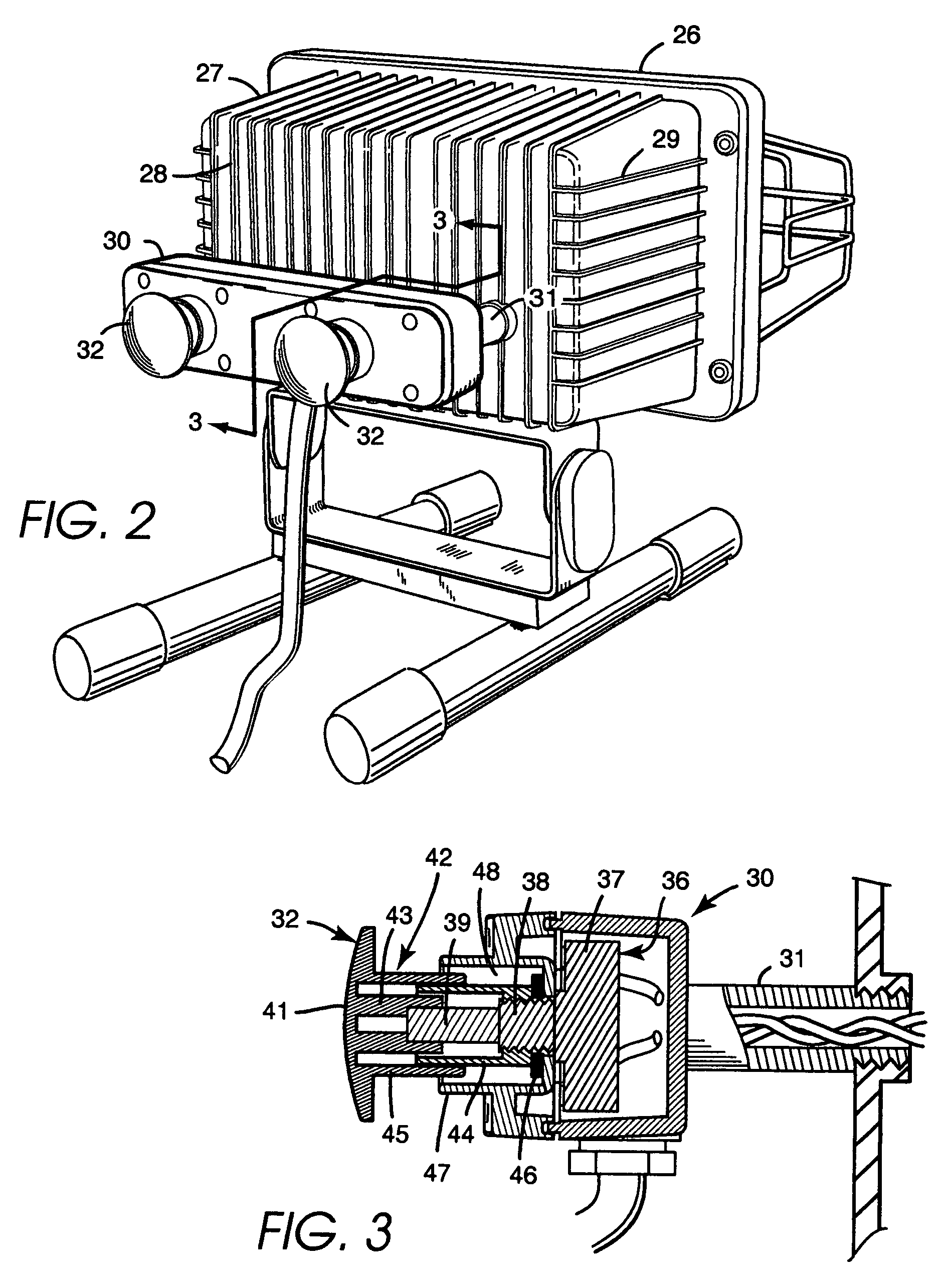Worklight with ergonomic switch
a worklight and ergonomic technology, applied in the field of worklights, can solve the problems of inconvenient use of such a switch arrangement, inconvenient use, and inability to adjust the position of the switch, so as to improve the ease and comfort of operation of the worklight and ensure the user's comfort. the effect of solid feel
- Summary
- Abstract
- Description
- Claims
- Application Information
AI Technical Summary
Benefits of technology
Problems solved by technology
Method used
Image
Examples
Embodiment Construction
[0013]FIG. 2 shows an overall view of a worklight head 26, now incorporating an embodiment of an ergonomic switch according to the invention. The head has a body portion 27, the exterior of which is seen in FIG. 2 with cooling fins 28 and 29. The interior of body portion 27 defines a lamp chamber, opening at the front, in which one or more halogen lamps are mounted. The switch for controlling the lamp or lamps is mounted in a switch housing or switch box 30, as it is commonly called, which in the embodiment of FIG. 2 is spaced apart from and attached to the back side of the worklight body 27. In the embodiment of FIG. 2 switch box 30 can serve a dual role as a grip that may be grasped to adjust the tilt of the worklight head. Switch box 30 is mounted to the worklight body by a pair of standoffs 31 symmetrically disposed at opposite ends of the switch box / grip, only one of the standoffs 31 being visible in FIG. 2. At least one of the standoffs 31 is hollow to provide a conduit for el...
PUM
 Login to View More
Login to View More Abstract
Description
Claims
Application Information
 Login to View More
Login to View More - R&D
- Intellectual Property
- Life Sciences
- Materials
- Tech Scout
- Unparalleled Data Quality
- Higher Quality Content
- 60% Fewer Hallucinations
Browse by: Latest US Patents, China's latest patents, Technical Efficacy Thesaurus, Application Domain, Technology Topic, Popular Technical Reports.
© 2025 PatSnap. All rights reserved.Legal|Privacy policy|Modern Slavery Act Transparency Statement|Sitemap|About US| Contact US: help@patsnap.com



